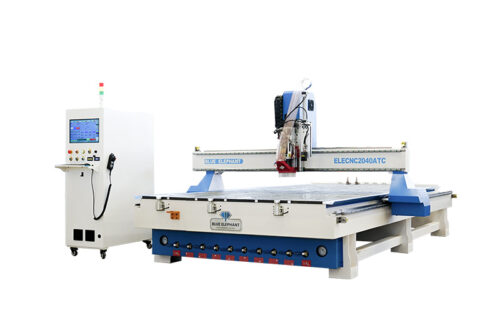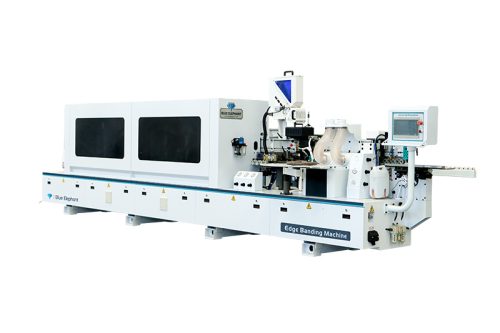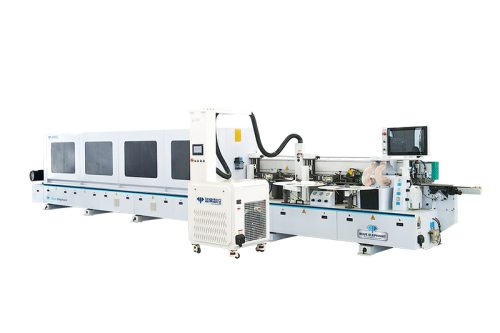I started my CNC cutting business with a single machine in my garage. No employees. No big budget. Just a passion for making things. Today, that side hustle has grown into a profitable business with steady demand.
If you’re thinking about starting your own CNC business, you probably have a lot of questions.
Where do you start? What machine should you buy? How do you get clients? That’s exactly what we’ll cover here.
This guide is based on practical experience, not just theory. Every step is designed to help you avoid common mistakes and get your business running faster.
By the end, you’ll have a clear understanding of the process—from setup to marketing to scaling. No fluff. Just actionable insights to help you succeed.
Success in CNC cutting isn’t about luck. It’s about strategy.
So, let’s break it down!
Step#1 Understanding CNC Cutting
Before jumping into the business side of things, you need to understand what CNC cutting is and why it’s a game-changer in manufacturing. Let’s dig deeper below:
Why CNC Cutting is in High Demand
CNC cutting has become an essential part of industries like automotive and custom fabrication. The ability to mass-produce high-quality cuts with minimal waste makes CNC a profitable business opportunity.
How CNC Cutting Works
The process starts with designing a digital file (CAD/CAM software like Fusion 360 or AutoCAD). The file is then converted into machine-readable code (G-code), which tells the CNC machine exactly how to cut the material.
Once the machine is set up, it follows the programmed instructions to create the final product with minimal human intervention.
Is CNC Cutting Right for You?
Starting a CNC cutting business requires technical knowledge, but you don’t have to be an engineer to succeed. With the right training and practice, you can master CNC cutting and build a profitable business serving high-demand industries.
Step#2 Conducting Market Research
I remember when I first considered starting my CNC cutting business. I was excited. The machines, the possibilities, the idea of making real money doing something hands-on, it all felt like the perfect opportunity. But here’s the truth: passion alone doesn’t pay the bills.
Before I even touched a CNC machine, I had to ask myself: Who needs my services? What are they willing to pay? And how do I position myself in a way that makes my business stand out?
That’s where market research comes in.
Finding Your Target Customers
Who do you want to serve? That’s the first question you need to answer.
- Manufacturers: They need precision-cut parts at scale. If you can guarantee accuracy and speed, they’ll pay top dollar.
- Construction Companies: Metal, wood, and plastic components are always in demand. Custom-cut panels, brackets, and signage are common needs.
- Small Fabrication Shops: Many don’t own CNC machines, so they outsource cutting work.
- Furniture & Interior Design Businesses: CNC-cut wood and acrylic pieces are huge in this space.
- Automotive & Aerospace Industries: High-precision parts are non-negotiable here, and they often require ongoing partnerships.
Your job? Find out which of these industries need CNC services in your area and how they currently fulfill that need. If they’re relying on slow, outdated processes—or if there aren’t enough suppliers to meet demand—that’s your opportunity.
Studying Your Competition
Your competitors aren’t your enemies. They’re your teachers.
Find other CNC shops near you or in your industry. What do they charge? What kind of customers do they serve? Are they overloaded with work or struggling for clients?
Look at:
- Google Reviews, Social Media Pages, and Industry Forums: Find out what customers complain about. If people say, “Takes too long to fulfill orders” or “Quality is inconsistent,” you now know where you can do better.
- Competitor Availability: If your competitors are turning customers away because they’re too busy, that’s a goldmine for you. Those customers still need CNC cutting services, they just need someone else to step up.
Validate Demand
You wouldn’t buy a CNC machine without knowing it works, right? The same goes for your business idea. Test the waters before going all in. Here’s how:
- Talk to Potential Clients: Reach out to businesses that use CNC services. Ask about their challenges and what they wish their suppliers did differently.
- Join Industry Groups: LinkedIn, Facebook groups, and trade forums are full of manufacturers looking for CNC services.
- Offer Sample Work: If you already have a CNC machine, make test pieces and show them to potential buyers.
- Check Online Job Boards: Sites like ThomasNet, Maker’s Row, and local B2B networks list companies actively looking for CNC services.

Step#3 Creating a Business Plan
A CNC cutting business isn’t just about having the right machine and skills—it’s about building something sustainable, profitable, and scalable. That starts with a solid business plan.
Think of it this way: Your CNC machine is your tool. Your business plan is your blueprint. Without it, you’re cutting blind.
Importance
A business plan isn’t just a document—it’s a roadmap to success. It defines your goals, outlines how you’ll reach them, and keeps you focused when challenges arise.
More importantly, if you ever need funding, investors and lenders will want to see a structured plan before they even consider working with you. Your business plan should answer key questions:
- What CNC services will you offer? (Custom fabrication, mass production, prototyping?)
- Who are your target customers? (Manufacturers, construction firms, interior designers?)
- What makes your business different? (Faster turnaround, precision quality, lower cost?)
- How will you get customers? (Online marketing, industry networking, partnerships?)
- What are your costs, and how much will you charge? (Profit margins, break-even point?)
Key Sections of Your CNC Business Plan:
Your plan doesn’t have to be 50 pages long. But it must include these essential parts:
- Executive Summary: A one-page overview of your business idea, goals, and why it will succeed.
- Business Description: What CNC services you’ll provide and what makes your business unique.
- Market Analysis: Who your customers are, what they need, and how you’ll stand out from competitors.
- Operational Plan: Your workspace setup, equipment, and daily business operations.
- Pricing & Revenue Model: How you’ll make money—pricing strategy, costs, and expected profits.
- Marketing & Sales Strategy: How you’ll attract and retain customers.
- Financial Projections: Start-up costs, monthly expenses, revenue targets, and break-even timeline.

Step#4 Choosing the Right CNC Machine and Equipment
Your CNC machine isn’t just a piece of equipment—it’s the heart of your business. The wrong choice can limit your capabilities, slow down production, and eat into your profits. But the right one? It can set you up for efficiency, precision, and long-term success.
This step is all about understanding what you need, what you don’t, and how to invest wisely.
Define Your Business Needs
Before you start shopping, ask yourself:
- What materials will I be cutting? (Wood, metal, acrylic, composites?)
- What type of jobs will I take on? (Custom fabrication, mass production, engraving?)
- What level of precision do I need? (High-detail engraving vs. rough-cut industrial parts?)
- How much space do I have? (Garage shop vs. full-scale workshop?)
- What is my budget? (Initial investment + ongoing maintenance?)
The right CNC machine depends on your specific business model. If you plan to specialize in metal cutting, a CNC router won’t cut it. If you’re focused on custom woodworking, a plasma cutter is overkill.
For example, companies like Blue Elephant offer a range of CNC routers that are particularly well-suited for woodworking and similar applications, making them a strong choice for businesses in that niche.
Different Types of CNC Machines
Not all CNC machines are built the same. Here’s a breakdown of the most common types and what they’re best for:
- CNC Routers: Ideal for wood and soft metals like aluminum. Perfect for furniture and sign-making. At Blue Elephant, we specialize in high-performance CNC routers designed to meet the needs of professionals in these industries.
- Laser Cutters: Best for high-precision engraving and cutting thin materials like acrylic, leather, and soft metals.
- Plasma Cutters: Designed for cutting thick steel, stainless steel, and aluminum with speed and efficiency.
- Waterjet Cutters: Uses high-pressure water to cut almost any material, including metal, glass, and stone, without heat distortion.
- Milling Machines: Offers extreme precision for cutting metal parts, ideal for industrial applications and prototyping.
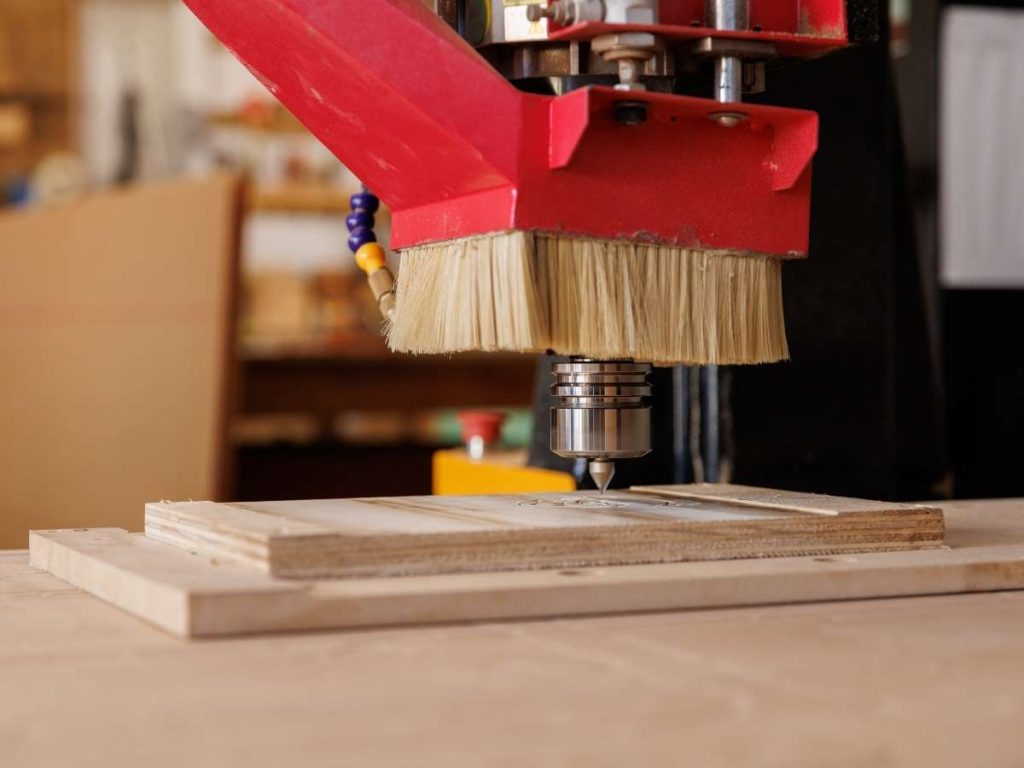
New vs. Used CNC Machines
Buying brand new might sound appealing, but it’s not always necessary—especially if you’re just starting out.
| Aspect | New CNC Machines | Used CNC Machines |
| Cost | High upfront cost | Lower cost, but may incur additional repair or maintenance expenses |
| Support & Warranty | Comes with manufacturer warranties and technical support | Typically no warranty; buyer assumes responsibility for repairs |
| Technology & Features | Latest features, higher efficiency, up-to-date software | May have outdated features or software; performance varies |
| Reliability | Minimal risk of malfunctions | Risk of wear and tear, missing parts, or hidden issues |
| Inspection Needs | Not typically required | Requires thorough inspection for condition, maintenance records, and functional testing (e.g. test cuts) |
| Best For | Businesses seeking top-tier performance and reliability from the start | Startups or budget-conscious buyers looking for cost-effective entry points |
| Tips for Buyers | N/A | Buy from reputable sellers, check maintenance history, inspect for wear, request test cuts |
If you go the used route, buy from reputable sellers and make sure the machine is in good working condition. Check maintenance records, ask for test cuts, and inspect the machine for excessive wear.
Essential Accessories & Software
A CNC machine alone won’t cut it—you’ll need additional tools and software to get the job done right.
Must-have accessories:
- Cutting Tools & Bits: Different materials require different cutting tools (end mills, router bits, plasma torch heads).
- Dust Collection System: Essential for wood CNC routers to keep your workspace clean and safe.
- Workholding Tools: Clamps, vacuum tables, or fixtures to secure materials while cutting.
- Cooling System: If cutting metal, a proper coolant system prevents overheating and extends tool life.
Software:
- CAD (Computer-Aided Design): Used for designing parts (AutoCAD, Fusion 360, SolidWorks).
- CAM (Computer-Aided Manufacturing): Converts designs into machine code (VCarve, Mastercam, Aspire).
- G-code Processor: Sends commands to the CNC machine, telling it how to move.
Step#5 Setting Up Your Workspace
Your CNC machine is only as good as the workspace it operates in. A well-organized, efficient setup can increase productivity, ensure safety, and reduce downtime.
A cluttered or poorly planned space? That’s a recipe for wasted time, mistakes, and even accidents.
Before you start taking orders, you need to create a workspace that works for you, not against you.
Choosing the Right Location
Where you set up your CNC operation depends on the size of your business and your long-term goals.
- Home-Based Workshop: Works well for small-scale operations and prototypes but may have space limitations.
- Garage or Shed Setup: A cost-effective solution, but be mindful of ventilation and power requirements.
- Commercial Space: Ideal for larger operations handling bulk orders or industrial projects.
Key considerations:
- Space Requirements: Your CNC machine needs clearance for operation, maintenance, and material handling.
- Electrical Supply: High-powered CNC machines require proper voltage and circuit capacity.
- Ventilation & Dust Collection: CNC routers create sawdust; plasma cutters generate fumes. Invest in proper air filtration.
- Noise Control: If working in a residential area, soundproofing can help minimize disruptions.
Organizing Your Workspace
A poorly designed workspace slows you down. A well-thought-out layout improves workflow, reduces errors, and increases productivity.
Key Zones to Set Up:
- Machine Zone: The CNC machine should have enough space around it for maintenance and operation.
- Material Storage: Keep raw materials organized and easily accessible to avoid downtime.
- Tool & Accessory Station: Dedicated space for bits, clamps, wrenches, and measuring tools.
- Workbenches & Assembly Area: If your products require post-processing, sanding, or assembly, have a separate clean area for finishing work.
- Computer & Software Station: Your CAD/CAM software should be in a dust-free zone for smooth operation.
Safety First
CNC machines are powerful tools, but they come with real safety risks—moving parts, sharp blades, high heat, and dust exposure. Skipping safety measures can lead to costly injuries or machine damage. Must-have safety equipment:
- Safety Glasses & Hearing Protection: CNC machines generate debris and loud noise.
- Emergency Stop Button: Easily accessible in case of a machine malfunction.
- Proper Ventilation: Especially for plasma cutting, laser cutting, or any process generating fumes.
- Fire Extinguisher: Especially if working with wood or flammable materials.
- First Aid Kit: Should always be within reach in case of minor accidents.
Power & Maintenance Setup
Your CNC machine requires reliable power to run efficiently. Overloading circuits or using an improper setup can lead to costly machine failures.
Checklist for Electrical Setup:
- Ensure your workspace has the right voltage (220V for larger machines, 110V for smaller ones).
- Use dedicated circuits to prevent power fluctuations.
- Invest in surge protectors and voltage regulators to protect against power spikes.
Routine Maintenance Musts:
- Lubrication & Cleaning
- Tool & Bit Replacement
- Software & Firmware Updates
Step#6 Registering Your Business and Legal Considerations
Starting a CNC cutting business is exciting, but before you can start taking orders and making money, you need to make it official. That means registering your business, handling taxes, and ensuring you’re legally protected.
Skipping this step? That’s a huge mistake. Operating without the right paperwork can lead to fines, penalties, or even getting shut down before your business takes off.
This step ensures that your CNC business is legitimate, compliant, and built to last.
Choose Your Business Structure
Your business structure determines taxes, liability, and legal protection. Choose wisely.
- Sole Proprietorship: The easiest option, but you’re personally liable for any business debts.
- Limited Liability Company (LLC): Protects your personal assets and offers tax flexibility. Ideal for small to mid-sized CNC businesses.
- Corporation (S-Corp or C-Corp): Best for larger operations planning to scale or take on investors.
Register Your Business Name
Your business name isn’t just a formality—it’s your brand. It should be unique, easy to remember, and available as a domain name if you plan to have a website.
- Check name availability
- Register with your state
- Secure a domain name
Get the Required Licenses and Permits
Depending on your location and services, you may need:
- Business License: Required in most cities and states. Check local regulations.
- Home Occupation Permit: If you’re running your CNC business from home, some areas require a permit.
- Zoning Permits: If you’re setting up a commercial shop, ensure your location is zoned for manufacturing.
- Environmental Permits: If your CNC work involves chemicals, dust, or waste disposal, check for compliance requirements.
Step#7 Learning CNC Software and Skill Development
Now that your business is officially registered, let’s talk about the one thing that separates amateurs from professionals—your skillset.
A registered business means nothing if you don’t have the expertise to back it up. You could have the best CNC machine, the perfect workspace, and a solid business plan, but if you can’t produce high-quality, precision work, your business won’t last.
That’s why learning CNC software and mastering your craft isn’t just an option—it’s a requirement for success.
Understanding CNC Software
CNC machines don’t just “know” what to cut. They need instructions. That’s where software comes in. There are 3 main types of software you’ll need to master:
- CAD (Computer-Aided Design): This is where you create the design. Every part starts here.
- CAM (Computer-Aided Manufacturing): This converts your design into tool paths and generates the G-code your machine will follow.
- CNC Control Software: This is the interface that communicates with your machine and executes the cut.
CNC Software for Beginners
You don’t need to learn every software out there—just the ones that fit your business needs.
For CAD (Designing Your Parts):
- Fusion 360: Great for both beginners and advanced users, free for personal use.
- AutoCAD: Industry standard, powerful but has a learning curve.
- SolidWorks: Excellent for engineering and complex designs.
For CAM (Generating Tool Paths):
- VCarve Pro: Perfect for CNC routers and woodworking businesses.
- Mastercam: Ideal for metal cutting and complex industrial applications.
- Aspire: Great for artistic CNC work and detailed engravings.
For CNC Control (Running the Machine):
- Mach3/Mach4: Popular CNC machine controllers with a user-friendly interface.
- GRBL: Open-source software for hobbyists and small-business CNC setups.
- LinuxCNC: A powerful and customizable option for serious professionals.
Step#8 Marketing Your CNC Business
You’ve set up your business, learned the software, and mastered your CNC skills. Now comes the most important part, getting customers.
No matter how good your work is, if no one knows about your business, you won’t make a dime. Marketing isn’t optional—it’s the fuel that drives your success.
It’s time to get your CNC services in front of the right people and turn your expertise into steady, paying customers.
Build a Strong Online Presence
If a business can’t find you online, you don’t exist.
- Website: A professional website with clear services, pricing, and contact details is non-negotiable.
- SEO Optimization: Use CNC-related keywords so your business appears when potential clients search online.
- Google My Business: Register your business so local companies can find and contact you easily.
- Social Media: LinkedIn and Facebook groups are goldmines for B2B networking.
- Portfolio: Showcase your best work through photos and videos. Before-and-after shots work great.
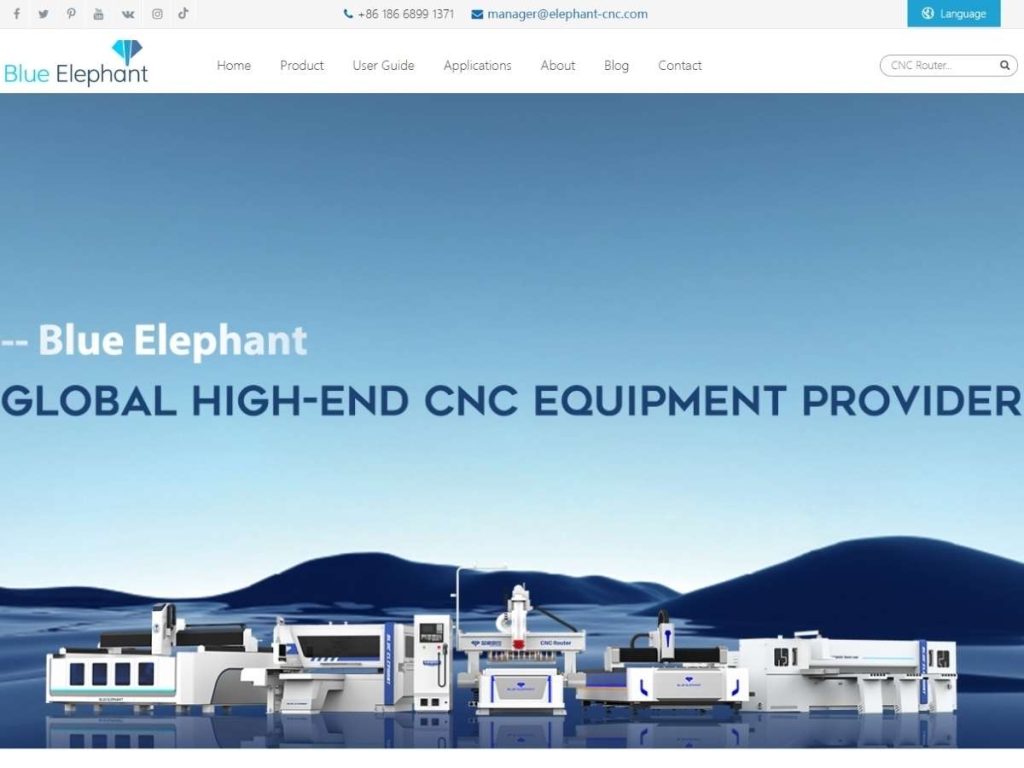
Network and Form Industry Partnerships
CNC cutting is a B2B industry. The best marketing strategy? Build relationships.
- Join Local Business Groups: Chamber of Commerce, trade associations, and networking events.
- Partner with Fabrication Shops: Many small shops outsource CNC work to specialists like you.
- Connect with Construction Firms: Contractors and architects often need precision-cut parts.
- Attend Trade Shows: Meet potential clients and showcase your services.
- Collaborate with Designers: Industrial designers and furniture makers constantly need CNC services.
Offer Introductory Deals
Businesses want proof before committing to a new supplier. Offering an introductory deal removes hesitation and gets them at the door.
- First-Time Order Discount: A small percentage of their first job can turn them into a repeat client.
- Referral Program: Offer discounts or perks for every new client they bring you.
- Free Sample Work: If applicable, provide a small test piece to demonstrate quality.
Conclusion
That first CNC order I took? It wasn’t perfect. But it was the start of something bigger, something that grew into a thriving business. Every successful CNC entrepreneur starts somewhere.
Your journey starts now.
You’ve got the knowledge. You’ve got the tools. All that’s left is to put them into action. No more waiting—your CNC business is ready to take off.
What’s one thing you can do today to take the first step?
If you need a little extra guidance, we’ve got you. Contact us today, and let’s build your business together.


